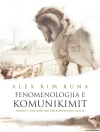In the past, our ideas of psychiatric hospitals and their history have been shaped by objects like straitjackets, cribs, and binding belts. These powerful objects were often used as a synonym for psychiatry and the way psychiatric patients were treated, yet very little is known about the agency of these objects and their appropriation by staff and patients. By focusing on material cultures, this book offers a new perspective on the history of psychiatry: it enables a narrative in which practicing psychiatry is part of a complex entanglement in which power is constantly negotiated. Scholars from different academic disciplines show how this material-based approach opens up new perspectives on the agency and imagination of men and women inside psychiatry.
Despre autor
Benoît Majerus (Dr. phil.), geb. 1975, lehrt Europäische Geschichte an der Universität Luxemburg. Sein Forschungsschwerpunkt ist die Geschichte der Psychiatrie im 19. und 20. Jahrhundert.












